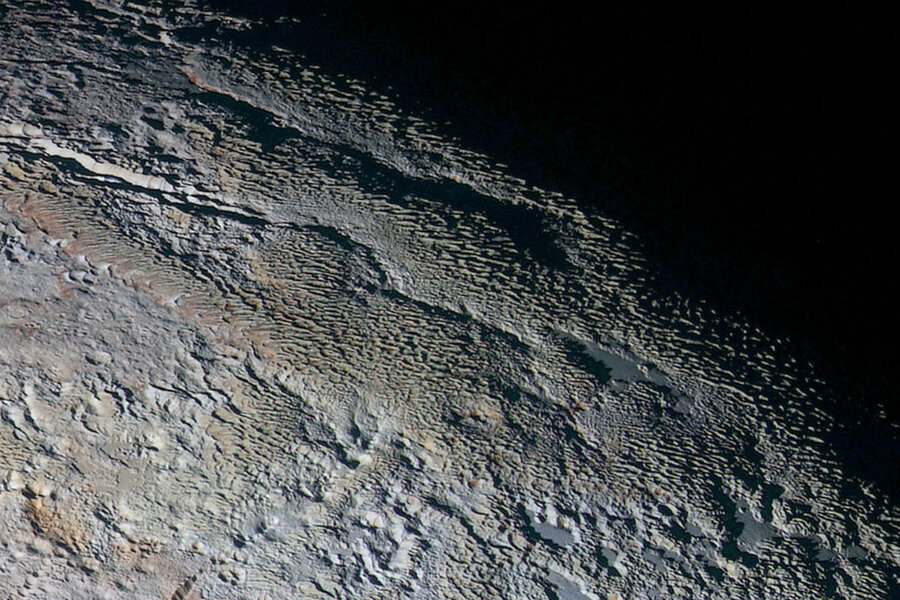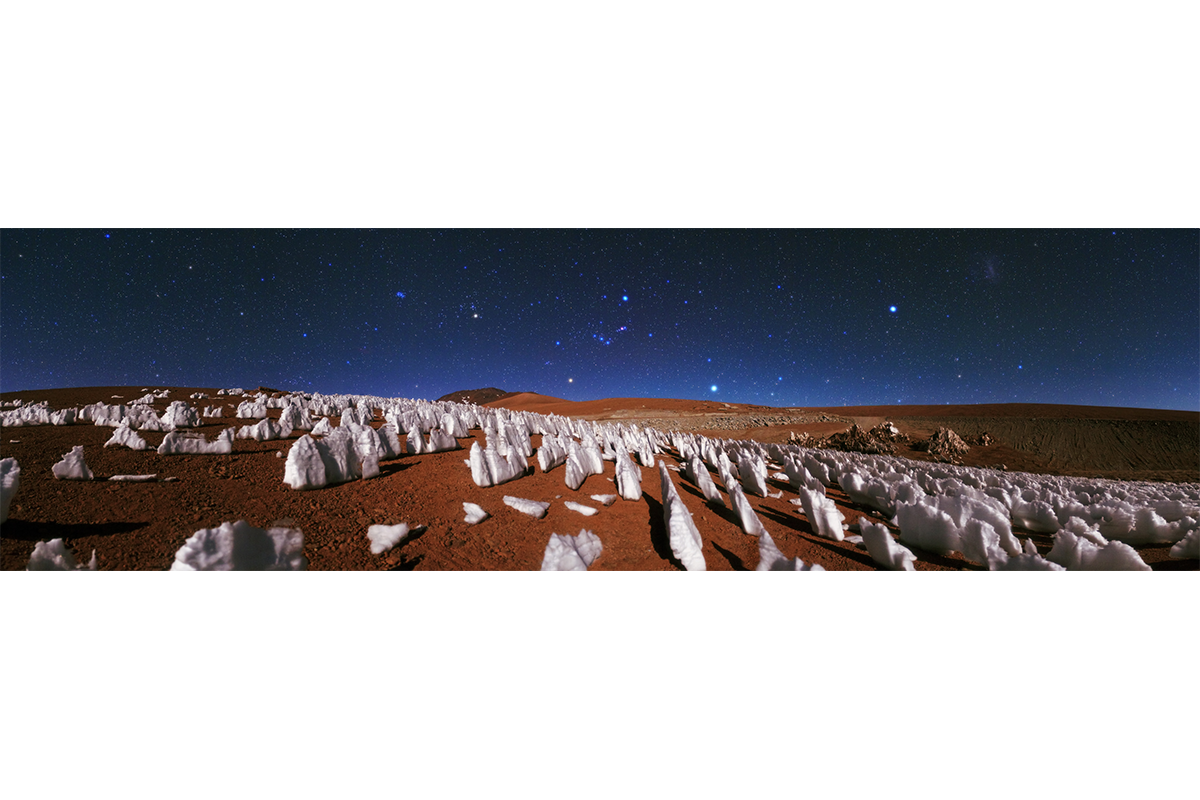The secret of Pluto's ridges? Ice blades.
Loading...
What do the Andes mountains have in common with Pluto? Both are likely to host the rare ice blades known as penitentes.
During its 2015 flyby of Pluto, NASA's New Horizons spacecraft observed icy ridges in the dwarf planet's Tartarus Dorsa region. To someone standing on Pluto's surface, they would appear as giant icy spikes, according to a paper published on Wednesday in Nature. The finding adds to our growing understanding of Pluto not as the inert ice-ball scientists once imagined but a geologically diverse and active world.
Penitentes have bowl-shaped depressions a few feet across, edged by spikes that can reach over 10 feet tall. First described by Charles Darwin, who saw some of these "pinnacles or columns" while crossing the Andes, they were given their name for their resemblance to the tall, pointed white hoods worn in the Processions of Penance during Spanish Holy Week.
On Earth, penitentes form at high altitudes in cold, dry places where conditions allow ice to turn directly into vapor without melting first, a process called sublimation. Direct sun rays vaporize some areas faster than others, creating heat-concentrating divots that speed up the process. Over the course of months, sunlight transforms what was flat snow into a fantastic landscape of meters-high spires.
Pluto’s penitentes differ from those found on Earth. Frozen nitrogen and methane, not frozen water, form these giant icicles. They’re also older and bigger.
“Exotic differences in the environment give rise to features with very different scales,” said John Moores, lead author of the Nature article. He and his colleagues calculated that the dwarf planet's penitentes deepen at a rate of one centimeter per 250-year orbit, which suggests that reaching full height takes tens of millions of years.
And just how high is full height? 1,600 feet. The stuff of ice climbers’ dreams.
“This gargantuan size is predicted by the same theory that explains the formation of these features on Earth,” said Professor Moores, who teaches space engineering at Ontario's York University, in a press release. “In fact, we were able to match the size and separation, the direction of the ridges, as well as their age: three pieces of evidence that support our identification of these ridges as penitentes.”
The team used an open source planetary climate simulation based on one originally developed for Earth. Tweaking parameters such as temperature, windspeed, and the thinness of the atmosphere to reflect the harsh conditions at Pluto’s surface, they produced a model that generates features just like those seen by New Horizons.
They also concluded that penitentes might not be limited to Earth and Pluto. “They may form elsewhere in the Solar System where the atmospheric conditions are appropriate,” the authors wrote in the Nature paper. One possibility is ice-bound Europa, where as-yet unexplained radar data suggests rough surface textures near the equator.
The newly identified penitentes join other surprising features discovered on the dwarf planet, including mountains of exotic ice, an actively evolving surface, and a blue sky. Rumors even swirl of an underground ocean.
The data download from New Horizons is complete, but analysis continues. Meanwhile, the satellite flies on to its next encounter, a rendezvous with Kuiper Belt Object 2014 MU69 in 2019.









